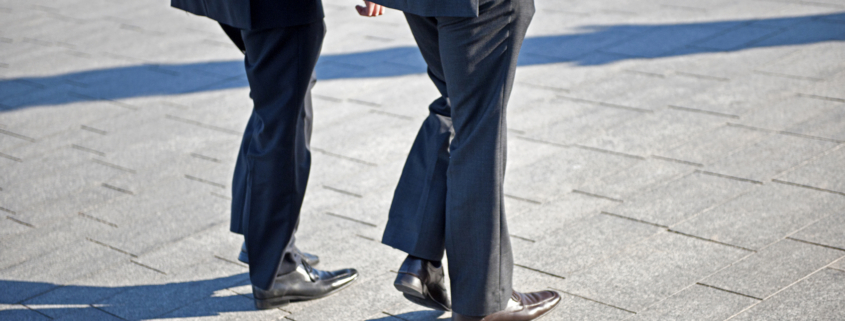Replace a Sitting Meeting With a Walking Meeting
When we are in the office, we often spend our entire day sitting. This is not only harmful on the body, but it can also dull your concentration and creativity. When you go from your computer to the conference room to your couch at home, this leaves little room for exercise in your daily routine. Luckily, there’s a rising trend in business meetings that may address these problems: walking meetings.
The Research
Studies have shown that taking walks increases blood flow to your brain, resulting in sharper concentration and higher cognitive function. It’s also a stress reliever that can allow you to think more clearly and focus on the tasks at hand. And the benefits don’t stop there. Our bodies are not meant to spend long periods of time sitting, and this has a myriad of negative health effects. For instance, our spines curve after several hours in our office chairs, limiting our lung capacity and placing undue strain on our spinal cord.
The Benefits of Walking Meetings
Walking not only corrects these physical and mental side effects, but can actually make your meetings more productive. Walking with someone, for instance, reduces the amount of eye contact, which allows us to let our guard down and significantly increases our comfort level. Studies have actually shown that brainstorming sessions conducted while walking result in more unique, creative solutions.
In addition to producing better results, walking meetings can also promote wellness and a healthy, engaged company culture. It gives you the opportunity to get to know your colleagues better, as people are more likely to open up while walking.
When to Sit Down
Of course, it can be difficult to conduct a walking meeting if there are papers or files you need to look at. Similarly, the aforementioned study found that in situations where there is only one solution to a problem, it’s actually more productive to sit down and focus on the problem. So walking meetings should maybe be reserved for brainstorming, interpersonal conversations or planning meetings.
However you choose to implement walking meetings in your company, you’ll likely find that your staff (and yourself) are more productive both during and after the walk. The physical and mental benefits of walking, in addition to the more casual feel of standing shoulder to shoulder with a colleague, can encourage creativity, increase camaraderie, and promote productivity in the workplace.
Don’t wait – schedule your walking meeting now, and let us know how it goes.

